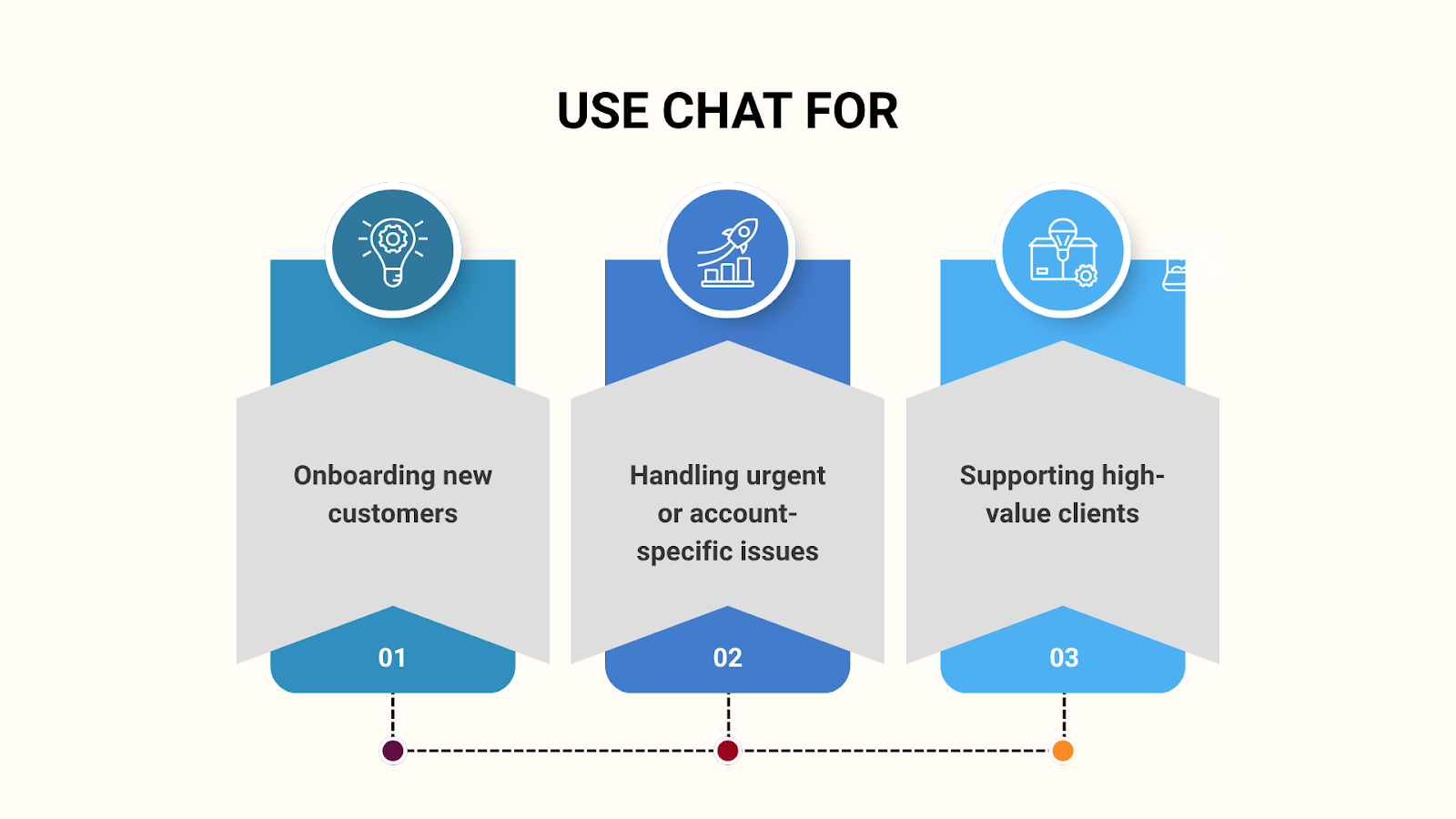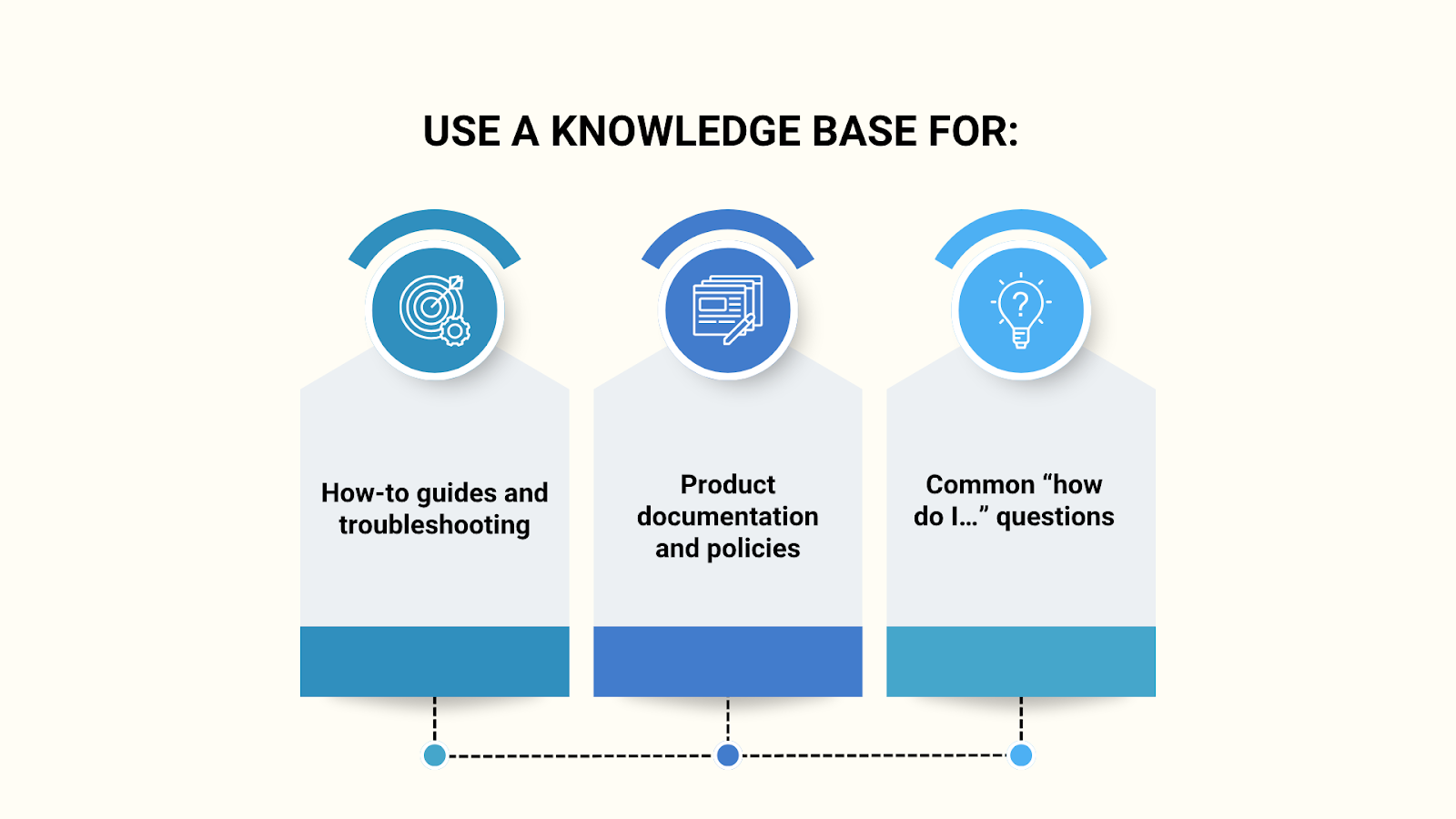Customer Support Without the Overhead: Why a Knowledge Base Beats Live Chat (Sometimes)
.png)
Customer Support Without the Overhead: Why a Knowledge Base Beats Live Chat (Sometimes)
Support leads know the drill: live chat is great—until it isn’t. What starts as a promise of instant help quickly turns into round-the-clock staffing pressure, missed conversations, and a growing backlog of “just checking in” tickets. If your team is lean, every ping eats into deeper work. That’s where a knowledge base quietly outperforms live chat.
In this post, we’ll break down when—and why—a help center is the smarter support investment.
What’s the real cost of live chat?
Live chat feels personal and fast, but it’s rarely free in practice. Let’s look beyond the SaaS subscription:
And for simple questions like “Where can I reset my password?” live chat is overkill. A single agent might answer the same query 30+ times a week. That’s time your team could reclaim with better self-service.
Why knowledge bases scale better
Here’s where the knowledge base vs live chat debate tips in favor of help centers—especially for startups and small teams.
Answers without the wait
A good knowledge base answers users before they ask. With HelpSite’s lightning-fast search, answers surface as customers type—deflecting tickets before they’re submitted.
Write once, serve thousands
Unlike live chat, which scales linearly with agents, a help article serves unlimited users 24/7. One well-written guide can prevent hundreds of repetitive questions. Better yet, it works across time zones—even when your team sleeps.
Customers prefer it
Self-service is no longer a “nice to have.” In fact:
Chat can feel intrusive for some users. A searchable FAQ or knowledge base lets people learn at their own pace—without waiting or engaging in small talk.
When live chat still makes sense
Let’s be clear: we’re not anti-chat. For high-touch moments—sales conversations, urgent bug reports, complex troubleshooting—chat shines.
But most teams don’t need to chat everywhere. Consider this hybrid approach:


With HelpSite’s multi-site support and public/private access controls, you can create tailored help experiences for different audiences—whether it’s product FAQs for customers or internal SOPs for staff. By organizing content clearly from the start, you reduce confusion and help users find what they need on their own—before they reach out.
Case study: How HelpSite replaced a chatbot
One reviewer shared:
The takeaway? Sometimes “automation” isn’t smarter—it’s just more frustrating. A well-organized knowledge base is faster than most bots, and easier to trust.
3 tips to shift from chat to knowledge base
If your team is ready to reclaim time, here’s how to do it without friction:
1. Audit your most common questions
Pull 30 days of chat transcripts or support emails. Group repeat questions into themes (e.g., login issues, billing FAQs). These are your article priorities.
2. Use AI to draft faster
With HelpSite, you can generate article drafts from just a title. It’s a huge time-saver when building your base from scratch or updating old docs.
3. Make your help center easy to find
Link it in your nav bar, app footer, and contact page. Use a widget or button in your chat tool that says, “Find answers instantly.”
Why HelpSite is built for this
HelpSite was designed for lean support teams—not full-service call centers. That’s why our customers choose us over Zendesk or Intercom when all they really need is:
And most importantly: no bloated features you won’t use.
Final thoughts: Knowledge base vs live chat
Both tools have their place—but if your goal is to support more customers with fewer agents, a searchable, AI-assisted knowledge base wins. It’s faster for your team, preferred by most users, and much easier to maintain than a 24/7 chat operation.



.jpg)